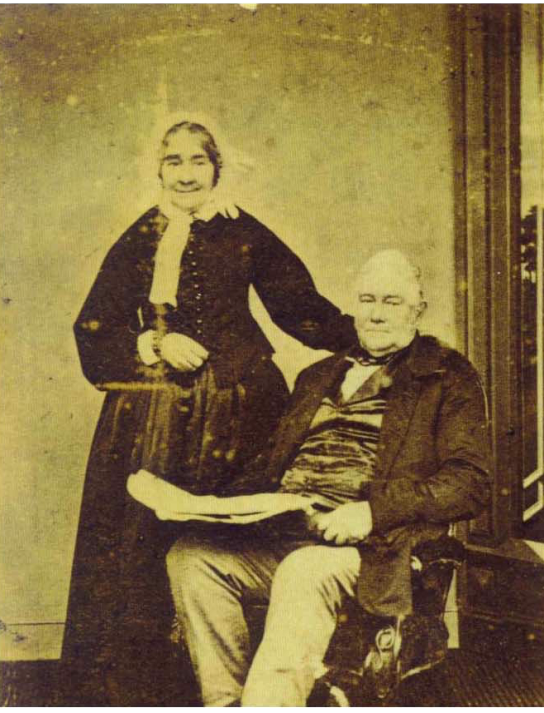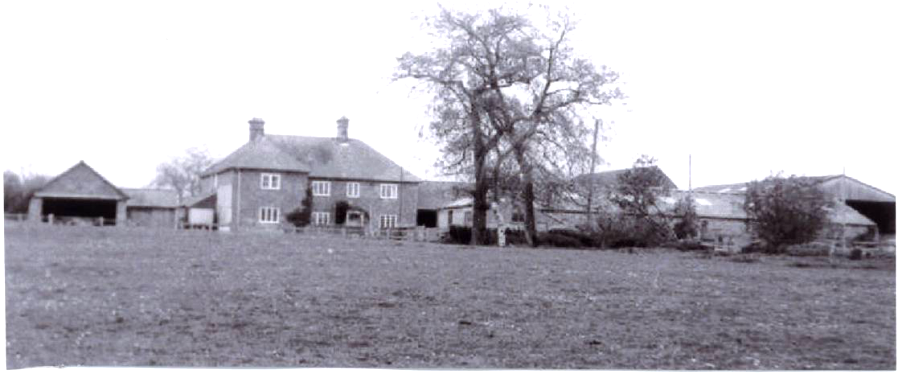Extract from Francis Toogood’s research:
Many Honeyfields were tenant farmers who in the early days spoke in the Dorset dialect. In those days they did not read or write so the name was written as it was spoken – F was pronounced V. There are many variations of the spelling in the early records: Honeville, Honnevil, Hunneval, Honeywel, Honevil and Hunnifield are some examples. By the time the family settled at Gillingham the spelling of Honeyfield was used (1800 until the present day).
Research goes back to a marriage at Kington Magna in 1704 when Robert Honeywell married Jane Parsons. Kington Magna is a small village four miles from Gillingham overlooking the Blackmore Vale. At least three to four generations of Honeyfields lived in the village and were baptised, married and buried there.
Robert was born about 1680 in the reign of Charles II. We don’t know where he was born. He lived through the reigns of James II, William and Mary, Queen Anne, George I and George II, and he died in 1766 in the reign of George III at Kington Magna.
Robert and Jane had three children. The eldest, Jane, appears to have been a cripple as the Church Warden’s Accounts refer to her being in distress repeatedly from 1741 to her death in 1767 at the age of 62, when the Parish paid for her coffin, digging her grave and tolling the bell, apparently at a cost of 10s 6d. The second child Robert, born 1706, married Anne Beaton in 1735 at St. Peter’s Church in Shaftesbury. Anne was born in 1714. They produced eight children, all recorded at Kington Magna.
Kington Magna is an isolated village four
miles from Gillingham. The church of All Saints is in a beautiful position on
the escarpment overlooking the Blackmore Vale.
Below the church is a large medieval fish pond and in the churchyard an ancient yew tree. There are no Honeyfield gravestones. In the village there are farmhouses and cottages of the 17th and 18th century. We
do not know where they lived. The church records reveal Honeyfields from 1704 to
1793. The Enclosure Act around 1780 was most likely to have been the reason for
the family leaving Kington Magna to settle in the Gillingham area.
James, born in 1761, married Mary White at Sturminster Newton, on 1st February 1790. They went on to live at Huntingford, a hamlet near Gillingham. James and Mary brought up their eight children at Huntingford, a hamlet with a few farms and cottages. It would have been a long walk to Gillingham yet all the children were baptised at St. Mary’s Church. They did not go to school.

One of their sons, James, married Charlotte Coombes and stayed in Gillingham farming 150 acres and employed three men in 1851. Their daughter, Miriam, married John Goddard and emigrated to Clinton, Iowa, USA in 1880, followed by another grandson of James who was born at Cole Street Farm, Gillingham.
The gravestone of James is one of the few around St Mary’s Church and inscribed on it are the names of some of his children. It reads: ‘In memory of James Honeyfield who died 26th March 1836 and of Mary his wife who died July 21st 1835 aged 66; also of Ann their daughter who died January 1807 aged 10 years; also of Jane Langley the daughter of James Honeyfield who died May 15th 1881 aged 82 years. Also of William Honeyfield her son who died September15th 1880 aged 74 years. Also Jane wife of the above who died June 8th 1892 aged 75 years.’
Some members of the family were leaving Gillingham by 1825 to find work. William, a woolstapler, married Elizabeth White at Glasbury on Wye. Others went to find work away from Dorset and agriculture in the Somerset coal mines, Bristol and South Wales.
Much of North Dorset was owned by large estates. The Morgans rented from the Duchy of Cornwall and the Honeyfields from the Duke of Westminster. These wealthy landowners were never very interested in the local people or their welfare, only in the income derived from ownership. They employed unscrupulous agents who controlled the tenants. In 1847 The Wilts and Dorset Banking Company closed their office in Gillingham following acute agricultural depression and so at that time our ancestors began to consider emigration to find a better life where the climate was more agreeable for dairy farming with no tithes to pay and less taxes, where they could acquire land and eventually be their own masters. Many of our family (the Honeyfields) emigrated.
John and Hannah Honeyfield
Between 1849 and 1856 four sons and one daughter of John and Hannah Honeyfield left Gillingham for New Zealand to be followed by a granddaughter in 1875, a grandson in 1876 and three great grandsons in 1910. In 1875 Miriam (Honeyfield) Goddard left Gillingham for the USA followed by James Benjamin Honeyfield from Cole Street Farm in 1880. John and Ellen Honeyfield, grandchildren of John and Hannah, left Park Farm in 1910 and settled in Manitoba, Canada.
They all hoped for a better life and were prepared to work hard. They never returned to their homeland and made a new life in New Zealand and North America.
John and Hannah Honeyfield were also tenant farmers just out of Gillingham, Dorset. John was born in Gillingham in 1795. James was the son of James and Mary Honeyfield and great-grandson to Robert Honeywell and Jane Parsons.
Hannah Morgan was also born in Gillingham, in 1803. Hannah grew up at Gutchpool farm near Matcomb, part of the Duchy of Cornwall estate.

As tenant farmers, John and Hannah moved farms on several occasions. John and Hannah’s eldest child, Harriet, was born at Malt House Farm in 1824. Henry John Honeyfield was born in 1830 at Longmoor Farm, near Gillingham. James and Edmond were born at Park Farm. Longmoor Farm is now part of the Duchy of Cornwall and is tenanted by Colin and Stuart Rogers.
John and Hannah proved to be successful farmers. The census return of 1851 states that John was employing 12 labourers.


The Census Return of 1851 states that John Honeyfield, farmer of Park Farm (300 acres), was employing 12 labourers.
Emma Elizabeth was the 7th child
of John and Hannah, born on the 20th March 1835 at Park Farm. Hannah wrote in her note book that Emma Elizabeth died on 19th April 1839 aged 4 years.
Hannah died in 1865. The next year John married Sarah Miles, a widow and 24 years younger. By this time five of the family were settled in New Zealand; Robert and John had farms of their own and only Charles and George were at home and they did not marry for another ten years.
John and Sarah retired to Peasemarsh. John
made his will in 1872 and he died the same year leaving his house and some land
in trust for his children. Sarah lived another 32 years so that his estate was not settled until 1904. By this time only John, James and George were living.
There is a grave stone to John and Hannah in the old churchyard, now a garden, in Cemetery Road, Gillingham.


History of Gillingham
While there is evidence of early Roman settlement, the town of Gillingham, situated in North Dorset, was established by the Saxons. A Saxon Cross shaft in the church of St Mary of the Virgin dates from the 9th century.

According to a British History Online article, Gillingham parish lies within the area of the mediaeval Royal Forest of Gillingham. More historical information about Gillingham is provided in the article, including that Gillingham was mentioned in the Doomsday Book (a census completed in 1086 ordered by King William the Conqueror), and that the Parish Church of St Mary’s dates back to the 14th century.
Gillingham has been a site of human habitation from earliest times. Today it is a small bustling industrial town on the edge of the Blackmore Vale in North Dorset at the confluence of three rivers over which pass five town bridges.
There is evidence of Roman Settlement. Later in the 12th century there was a royal hunting lodge which by 1300 had become redundant. Medieval period records mention 130 dwellings and a population of several hundred. In the 17th century the enclosure of Gillingham Forest began. The land was cleared and divided into large fields and isolated farm houses were built. A fire swept through the town in 1694 which explains why so few early buildings survive.
Industry first came to the town around 1769 with the establishment of silk spinning. The rivers provided power for the mills that came in the 18th century.
All through the ages the largest employer has been the land and until recent times the work was done by hand. The workers had a very hard life and were poorly paid, life expectancy was not good as food was not plentiful, medicine was hard to come by and smallpox outbreaks were frequent. In 1710 there were 19 deaths. In 1740 there was another outbreak and again in 1769 there was a severe outbreak. Scarlet Fever often occurred and was a killer. In 1843 there were 41 deaths. In 1859 Robert and Rhoda Honeyfield buried four little sons aged 4, 3, 2, and an infant. In 1830 farm workers became very dissatisfied as many had no work and were on ‘poor relief’ and riots followed. 1840 was the time of the Irish Famine and many thousands emigrated, some to New Zealand. In 1848 the church overseers gave £40 followed by £150 for poor people to emigrate.
From1783 to well into the 20th century there were many Honeyfields in Gillingham: 40 in the 1841 census and 31 in 1901, but now there are none. All that is left to remind us is an estate of houses in Peasemarsh named Honeyfields.
In the summer of 1820 Constable stayed with his friend, John Fisher, in the close at Salisbury. They visited Gillingham during their stay. John Fisher was also the vicar of Gillingham. It has been established that Constable was at Ecliffe on Saturday 29th July, and made a drawing in Common Mead Lane on Sunday 30th July and next day he sketched a farm cart. By 1823 Archdeacon Fisher and family had taken up residence in Gillingham and Constable was encouraged to visit. In August 1823 he travelled to Salisbury, thence to Gillingham. He completed two works during his stay including Parhams Mill. The view is not so recognisable today as the mill burned down in 1825 but the surrounding countryside accurately portrayed.

Hello
I live at Peacemarsh Farm, Gillingham where James Honeyfield and Charlotte Coombes lived. Have already supplied Brice Petersen, a descendant of Miriam Honeyfield Goddard, with a history and photograph of farm. Have you seen that material? If not let me know and I can send it to you.
Lynda Grange
LikeLike
Hi Lynda,
Thanks so much for contacting me. I’ve not seen your material so please do send it to barretthoneyfield@gmail.com. Thanks very much.
LikeLike
Hi
I am a relative of Hannah Honeyfield from the Morgan side. Hannah was a sister of my great-great-great grandfather Edmund Morgan (married Miriam Coombes in 1828).
My great-great grandfather’s (John and William Morgan) emigrated to NZ on the Berkshire in 1849 along with their cousins William and Mathilda Honeyfield (children of John and Hannah).
I have some original handwritten notes from John Morgan detailing their voyage, from leaving Longmoor Farm to their arrival in New Plymouth NZ on 16 January 1850.
LikeLike